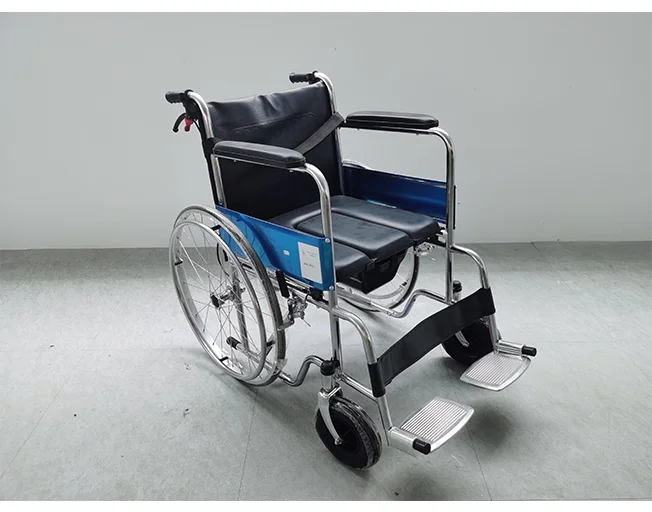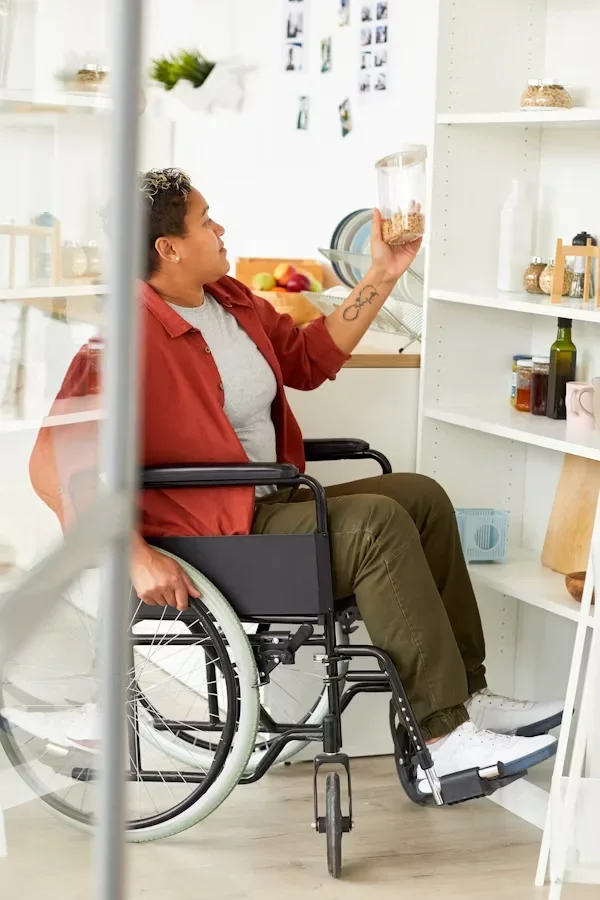What Features Define High-Quality Chairs for Handicapped Adults?
Time : Aug 22, 2025 View : 1,491
For people dealing with mobility challenges, a top-notch chair is way more than just somewhere to sit—it’s a lifeline for independence, comfort, and safety. This guide gets into the nitty-gritty of what sets these chairs apart, from clever ergonomic shapes to nifty features built for specific needs. It’s all about picking the perfect one to make daily life better.

Physical Challenges and Mobility Limitations
Choosing chairs for handicapped adults demands a keen eye for diverse physical hurdles. These might include weary muscles, rigid joints, sudden spasms, or partial loss of movement. Folks grappling with conditions like multiple sclerosis (MS) or amyotrophic lateral sclerosis (ALS) often face creeping exhaustion and fading strength. Likewise, those with spinal cord injuries or missing limbs need thoughtful support to stay steady and ward off skin troubles.
These challenges make it tough to shift or move without aid. A stellar chair must step in like a trusty friend, offering solid support, keeping the body steady, and easing movement.
Importance of Ergonomics and Postural Support
Smart design in chairs isn’t just nice—it’s a must. Slouching or sitting wrong can spark skin sores, breathing woes, or nagging aches. A top-notch chair cradles the spine, hips, and knees in a cozy, natural pose. It spreads weight like a gentle hug, avoiding strain.
Features like curved backrests and seats that tilt just right ease the body’s burden during long sits. For those who can’t wiggle around much, these touches are a lifeline to dodge health hiccups.
Role of Assistive Seating in Enhancing Quality of Life
A cleverly crafted chair lifts spirits and freedom. It lets users savor meals at the table or glide from bed to chair without a fuss. This sparks dignity and brightens daily life.
For safe shifts, especially under moonlight, bedside handrails shine. They stand firm like loyal guards, offering a steady grip when climbing in or out of bed, pairing perfectly with a thoughtful chair.
Core Functional Features to Look for in Chairs for Handicapped Adults
A good chair can make a big difference in daily life by fitting specific physical needs and offering solid support. Here’s what to keep in mind to find a chair that really works for the user.
Adjustability and Customization Options
Chairs must mold to the user’s frame, not force the body to bend to them. Tailoring is the heart of comfort and purpose.
- Height, Seat Depth, and Backrest Adjustment: Legs that shift up or down ensure feet rest flat, like roots on solid ground. Wrong height can pinch blood flow or tilt the hips unevenly. A seat that slides to fit supports thighs without jabbing behind knees, dodging discomfort and circulation snags.
- Armrest and Footrest Modifications: Armrests should swing away like open gates for smooth side transfers. Footrests need to bend and stretch to match leg lengths or braces, fitting like a custom shoe.
- XUNYUAdjustable Wheelchair Series Overview: The XUNYU Adjustable Wheelchair Series boasts lightweight aluminum alloy with a carbon transfer process. Its handrail flips up like a welcoming arm, easing side entry without bending low. The plush Oxford cloth seat cushion cradles users for hours without weariness. A lithium battery with dual charging modes fuels long, uninterrupted journeys. With a one-tap folding frame, these chairs are travel-ready—light as a breeze yet tough as nails for daily use.

Supportive Cushioning and Pressure Relief
Thick cushions are the unsung heroes of lasting ease. Oxford cloth seat cushions breathe easy and fend off pressure buildup, a boon for those at risk of skin woes from long sits.
Stability, Safety, and Durability Standards
A sturdy frame is the backbone of safety and longevity. Medical-grade aluminum alloys blend strength with featherlight ease. Anti-tip wheels, firm brakes, and grippy casters keep the chair steady as a rock.
Mobility and Accessibility Enhancements in Chair Design
Great wheels don’t just roll—they dance over bumps and uneven paths. The XUNYU series sports 7-inch PU wheels up front and 10-inch ones in back, gliding smoothly indoors or out.
Liftable armrests open the way like a friendly invitation, making car transfers a breeze without hunching. The XUNYU handrail lifts for effortless ins and outs, lightening the load for caregivers and boosting user freedom. Bedside handrails stand tall like trusty anchors, offering extra grip for bed-to-chair shifts, especially in the quiet of night.
Specialized Features for Daily Living Activities
Certain wheelchairs sport nifty features like cutouts for toileting or water-resistant fabrics for showering—perfect when space is tight and extra gear’s a hassle. Reclining lets you shift weight smoothly, keeping you comfy all day. Tilting tweaks the angle from hip to knee, helping blood flow without throwing off your posture. Fancy chairs up the ante with remotes or apps to adjust positions, a lifesaver for anyone with weak hands or tired arms. Some even buddy up with smart home setups, so a quick word can dim lights or call for help—huge for folks living solo. XUNYU’s digital control modules lock in your favorite settings like a trusty playlist, simplifying things for users with multiple helpers or those who like their setup just so every day.
Customization Based on Specific Disabilities or Conditions
For folks with conditions like MS or ALS, wheelchairs need back supports that flex with shifting muscle strength, kinda like a dancer flowing with the beat. Headrests step in to steady things when core control fades. For spinal cord injuries or amputees, dodging skin sores is critical—gel cushions and air-cell tech work like soft shields, easing pressure during long sits. XUNYU delivers with adjustable armrests, foot supports, and dual-charging lithium batteries, all built to match specific health needs, not some generic mold.
Regulatory Compliance and Clinical Validation of Chair Designs
Wheelchairs in public spots gotta follow ADA rules like a familiar path, making sure everyone can use ‘em. ISO certifications prove they’re tough enough for daily grind, especially in medical settings where you can’t afford slip-ups. Occupational therapists lend their smarts to design, keeping chairs practical and cozy, grounded in what users actually need. XUNYU chairs boast global medical device certifications, showing they’re all about quality and healthcare-focused solutions.
Maintenance, Cleaning, and Long-Term Usability Considerations
Keeping a chair clean is non-negotiable, especially for toileting tasks—washable covers that shrug off germs are a must. PU leather wipes down quick and holds up over time. A good warranty screams confidence from the maker, and reliable after-sales support means you’re covered long after your chair shows up. XUNYU offers excellent after-sales service. If you have any needs, please feel free to contact XUNYU.
FAQ
Q: What Makes a Chair Suitable for Long-Term Use by Handicapped Adults?
A: A top chair boasts plush Oxford cloth cushions for lasting comfort, adjustable parts to hug individual needs, and tough medical-grade frames. It must also meet ADA and ISO standards to stay safe in any setting.
Q: Are There Mobility Aids That Pair Well with Assistive Chairs?
A: Absolutely, bedside handrails are a perfect match. They offer strong grips for safe bed-to-chair hops, especially at night or after surgery.
Q: Can Assistive Chairs Be Folded Easily for Travel?
A: Yes, many chairs, like the XUNYU series, fold with one tap. They’re a cinch to stow or toss into a car, ideal for travel or cozy spaces.


